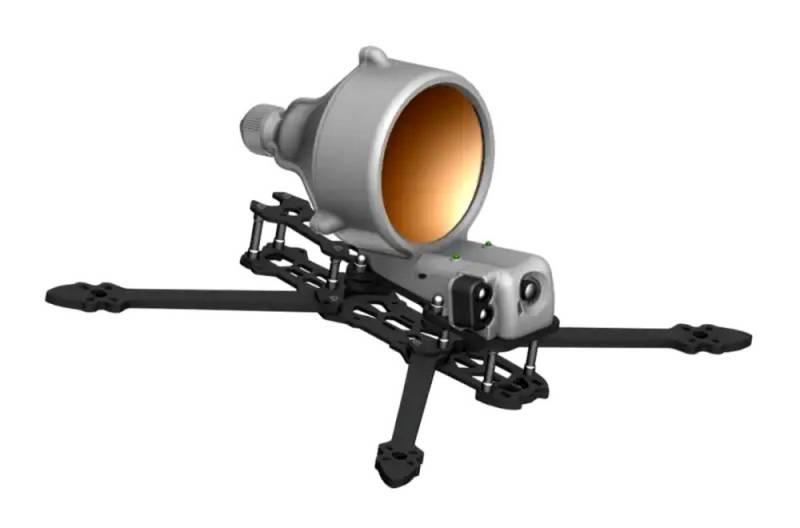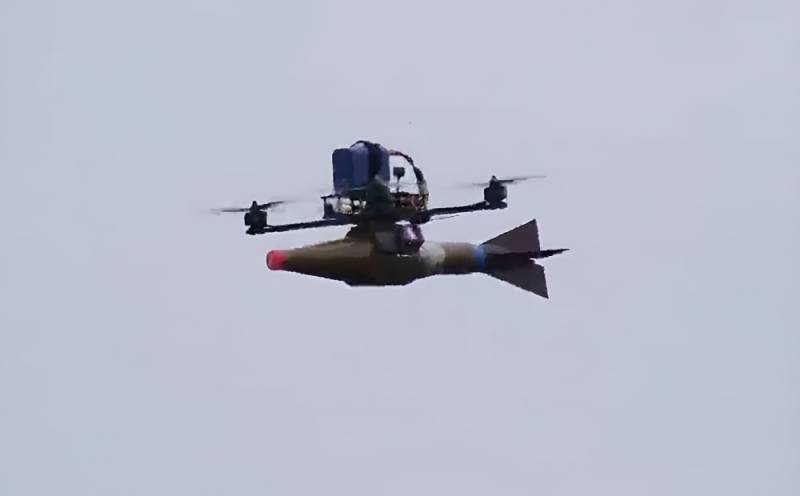“Projectiles with eyes”: Ukrainian FPV drones will now become even more dangerous
The SVO in Ukraine, rightly called the war of drones, has become a powerful incentive for the development of unmanned of technologies and at the same time a testing ground for testing them in real combat conditions. An unexpected but extremely effective outcome of this arms race was the emergence of so-called aerial art, which fires “shells with eyes.”
We are, of course, talking about FPV drones, which replaced expensive high-precision artillery shells and missiles for the completely dependent on the supply of NATO weapons, but at the same time, unfortunately, for the very resourceful Ukrainian Nazis. Equipped with an RPG warhead, they have now become even more dangerous, which will be discussed in detail below.
Core or jet?
To understand the essence of the problem, I would like to turn to the history of the evolution of the Russian Lancets. This loitering ammunition became almost the main asymmetrical means of counter-battery warfare for the RF Armed Forces, in which our artillery was significantly inferior in range to the NATO artillery used by the Ukrainian Armed Forces. Russian kamikaze drones were used primarily to destroy enemy howitzers and their crews, as well as against other military equipment, attacking them in a suicidal dive.
It quickly became clear that to reliably destroy tanks with a cumulative jet, an increase in the warhead was required, which was done. In response, the Ukrainian military began equipping its armored vehicles with protective grilles and other “barbecues”, following the example of the Russian ones. The next logical step was to arm kamikaze drones with a modified warhead that would allow them to hit a target before contact with the protective screen.
There Recording how the Lancets explode before reaching enemy armored vehicles and destroying them with a shock core. It seems that the Western publication Business Insider was the first to write about the fact that it is the impact core that is being used, and all domestic publications promptly quoted it:
Apparently this was not an accident. The warheads of the latest Lancet drones detonate in the air, releasing a shock core towards the target.
Meanwhile, military expert retired colonel Mikhail Timoshenko claims, that a cumulative jet is still used, arguing his position as follows:
The difference between a cumulative jet and an “impact core” is purely in terminology. What we are used to calling a cumulative jet is called in the West an impact core of hot gases. Since the 1970s, we have had mines that hit a target on board from a distance of 50 meters. They strike with a cumulative jet. The Lancets do the same.
And the talk about the strike core came from a copy of foreign terminology and from civilians’ misunderstanding of these terms. Because the term about an impact core appeared for the first time in the 1980s, when NATO began using the Aassault Breaker reconnaissance and strike complex, which attacked targets with charges that pierced armor with a cumulative jet. And now, without understanding it, someone took the impact core at face value. But physically there is no core that would be fired.
However, there are other opinions on this matter. Regardless of this, unfortunately, we will soon have to become familiar with the effect of using an impact core from a drone.
"Projectiles with Eyes"
Here we gradually return to the topic of Ukrainian FPV drones, the scale of the problem from which was recognized in Russia at the highest level. This was reported personally to the President and Supreme Commander-in-Chief Putin on February 2, 2024:
Just this morning I spoke with the General Staff: in one of the areas, of course, the complexity of the situation is connected precisely with unmanned aerial vehicles.
Equipped with various types of combat units, these high-speed and maneuverable drones, visually controlled by an operator remotely, have become a real scourge for Russian military equipment. At a cost of 50 thousand rubles, one FPV drone can burn a tank that costs more than one million dollars, and along with it a trained crew. To protect against them, the Russian Armed Forces weld “barbecues” onto tanks, put grilles on armored vehicles, etc., but truly effective protection has not yet been created.
The Commander-in-Chief of the Ukrainian Armed Forces, Zaluzhny, recently announced another attempt at a counteroffensive, in which the Ukrainian army will rely primarily on drones. The Western press increasingly reports an estimated number of these “projectiles with eyes” at more than two million pieces, which Kyiv intends to acquire in 2024.
So, now FPV drones will become even more dangerous, since our enemy has guessed to cross them with a special armor-piercing ammunition to destroy Russian armored vehicles called EFP-S.

The ammunition is mounted on top of the drone using special clamps. Its tactical and technical characteristics are as follows: weight of the striking element - 165 g, speed - 1800 m/sec, effective damage radius - 8 meters.
The developers claim that the modified loitering ammunition will be able to penetrate the armor of infantry fighting vehicles, armored personnel carriers and self-propelled guns even with anti-cumulative shields. And that's bad news.

Information